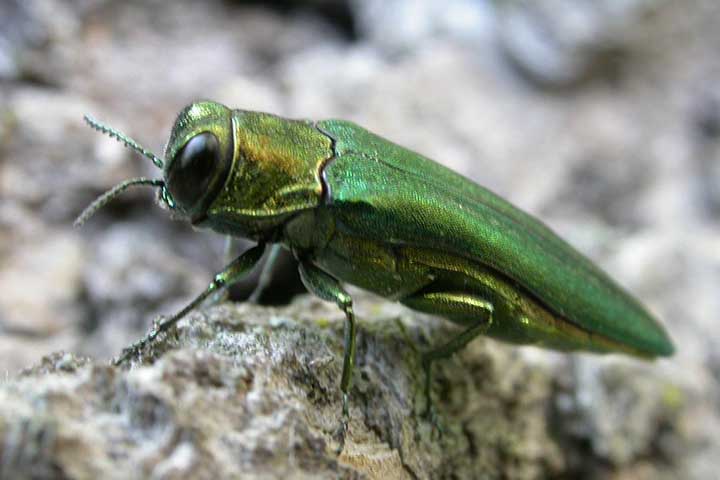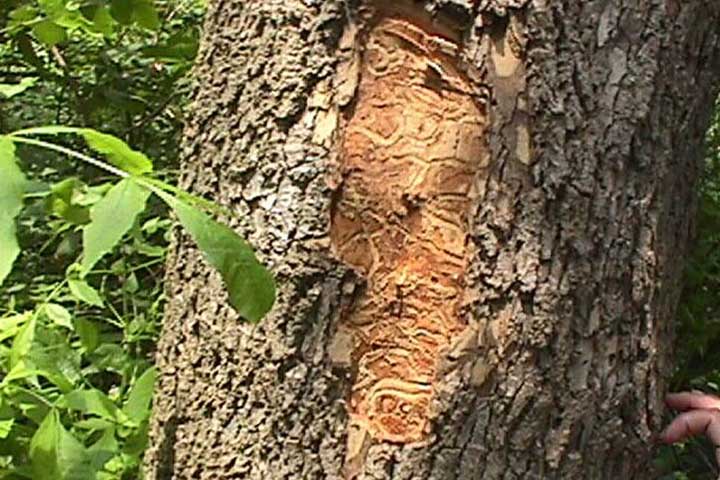Invasive Beetle Threatens Ash Trees

February 12, 2019 — Somewhere between five and ten percent of all trees in Weston are ash trees. Within the next few years, almost all of them will die.
That grim news was delivered by Tree Warden Bill Lomas to the Board of Selectmen on February 11. The culprit is an invasive beetle, the emerald ash borer.
First Selectman Chris Spaulding said the beetles represent something akin to “a natural catastrophe.”
Mr. Lomas told the Board the infestation doubles every year. Within the next 12 to 18 months, it will reach 100 percent of ash trees in Weston.
The emerald ash borer lays eggs in the bark of ash trees. When the eggs hatch, the larvae eat into the bark and feed on the tree. This blocks the flow of nutrients and water. It usually takes about a year for the tree to die. As it does, limbs begin to fall. The tree itself weakens, and according to Mr. Lomas, “won’t hold up in storms.”
This is an obvious threat to power lines. As a result, one of the few items to increase in the Town budget proposed for next year is for tree removal. Mr. Lomas estimates between 800 and 1,600 ash trees on Town property will have to go. “I’d rather get them down before they drop,” he said.
There are already telltale signs of doomed ash trees around town. Mr. Lomas described them as “gray, mottled brown” with a heap of loose bark at the bottom of the tree. The bark falls as “woodpeckers go after the borers and strip the trees.”
Mr. Lomas can only remove trees on Town land. Especially as spring arrives, it would be wise to inspect ash trees on your property for signs of damage or rot. You can consult an arborist if you see something that concerns you. This is a particularly good idea if an ash tree could fall on a power line or your house.
This short video from Iowa State University is an excellent guide for identifying ash trees and signs of emerald ash borer infestation.
This page on the Connecticut Tree Protective Association website is a bit technical in spots, but also quite informative.

An ash tree damaged by emerald ash borers. Photo: James W. Smith, USDA APHIS PPQ, Bugwood.org trees.
